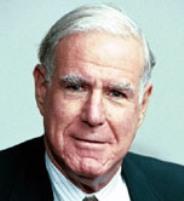The HCFO program ended in December 2016.
This site will no longer be updated, and some elements may not appear correctly.
The Painful Prescription: Revisited
Grant Description: With the current trend of rising health care costs in the United States, many wonder whether health care rationing is likely to slow the growth of health care spending and what its effects might be. With support from HCFO, the researchers updated their RWJF-funded research of 20 years ago from which they published “The Painful Prescription: Rationing Hospital Care.” This seminal work compared health care in the United States and Great Britain and examined the potential for rationing in this country. The researchers: 1) updated data on most of the technologies examined in the original book; 2) added an extended examination of the political, legal, and other obstacles to the acceptance of rationing, and 3) authored two policy briefs, Health Care Rationing: What it Means and Treatment of Coronary Artery Disease: What Does Rationing Do? The researchers sought to clarify the nature of the painful prescription—that “external constraint” known as rationing that will force patients to forego care when providing all beneficial medical care to everyone is more than the U.S. can afford.
Policy Summary: The researchers examined reasons for the differences in treatment and outcomes in the United States and Britain, and they analyzed the difficulty of rationing care in the United States. The British ration because their health care system operates under strict budget limits. On the other hand, the United States has yet to create successful mechanisms to adequately control health care spending. When comparing coronary artery treatment in the United States and the United Kingdom, the researchers found that, in 2002, the combined coronary artery bypass graft (CABG) surgery and angioplasty rate in the United States was over four times greater than the rate in the United Kingdom: the combined CAGB/angioplasty rate was 5,967 per million in the United States while it was only 1,380 per million in the United Kingdom. Both CABG and angioplasty are costly. In the United States in 2002, CABGs cost an estimated $60,853 per patient and angioplasties cost $28,558 per patient. Thus, performing more of these procedures increases health care spending. The researchers identified four possible explanations that might account for the very large difference in treatment rates between the United States and the United Kingdom: 1) U.S. patients might be sicker, ignoring the effects of treatment, than are British patients; 2) By common perception, resource limits and differences in attitudes toward medical care interact; 3) Differences in resource availability may exist; and 4) The differences in the ways in which doctors are paid could affect treatment rates. Along with differences in coronary artery treatment, the researchers also found striking differences in other health care treatments. Other findings include: 1) The U.S. has four times as many computer tomography (CT) scanners as does Britain: 29.4 verses 7.1 per million in 2001; 2) The U.S. performs about four times as many CT scans as does Britain: 128,000 per million versus 30,297 per million; and 3) The U.S. has more than two times as many magnetic resonance imaging (MRI) machines and performs nearly five times as many MRI exams as Britain. The current advancements in medicine and technology are breathtaking. However, while these advances continue to help improve the health, well-being, and quality of life for many, the financial implications of continued advances are significant and my not be sustainable. As health care costs climb, additional rationing efforts, explicitly based on costs rather than medical necessity, may be needed. Rationing may also be necessary in the event of supply shortages, irrespective of cost. If rationing becomes unavoidable, determining the “how” of rationing will not be easy. Possible approaches to rationing include developing public policies to limit demand for care, curbing the advancement of medical technology, or limiting care that is worth less than it costs to people who are well insured.
Research Topics
Search Grants & Grantees
Principal Investigators

